In the world of firearms, understanding the intricate details of firearm parts is essential for enthusiasts, hobbyists, and responsible firearm owners. This article aims to provide readers with an in-depth exploration of various firearm parts, their functions, and considerations for upgrades. Whether you’re looking to enhance performance, personalize your firearm, or simply deepen your knowledge, this guide will equip you with valuable insights.
Anatomy of a Firearm: Key Components Unveiled
The anatomy of a firearm unveils a precise and intricate assembly of key components, each contributing to the firearm’s functionality and performance.
-
- Barrel: The heart of accuracy
At its core lies the barrel, a meticulously crafted tube that guides the bullet’s trajectory and determines accuracy.
-
- Receiver: The central housing of the action
Connected to the barrel is the receiver, housing the firing mechanism and serving as the foundation of the firearm’s action.
-
- Slide: A critical element in semi-automatic handguns
In semi-automatic handguns, the slide encapsulates the firing components, facilitating cycling and ejection.
-
- Trigger assembly: Initiating the firing sequence
The trigger assembly, a critical interface between shooter and firearm, initiates the firing sequence with controlled precision.
-
- Grip and stock: Ergonomics and stability
The grip and stock offer ergonomic comfort and stability, ensuring accurate handling and control during operation.
-
- Sights: Aiming for precision
Completing the ensemble are sights, providing the shooter with precise aiming reference points for consistent and effective targeting.
Collectively, these key components form the foundation of a firearm’s design, showcasing the harmonious interplay between engineering, ergonomics, and functionality.
Function & Role of Firearm Parts
The function and role of firearm parts are essential elements that contribute to the seamless operation and overall performance of these complex tools. Firing mechanisms, such as hammer-fired or striker-fired mechanisms, dictate how a firearm ignites the ammunition and initiates the firing process. Extractors and ejectors work in tandem to ensure the safe and efficient removal of spent casings and the loading of fresh rounds. Magazines, often detachable, provide a steady supply of ammunition, while the magazine release allows for quick reloading. The bolt carrier group, a central component in semi-automatic rifles, manages the cycling of rounds, ensuring the firearm is ready to fire with each trigger pull. Gas systems, commonly found in semi-automatic and automatic firearms, control the flow of high-pressure gases to cycle the action, regulating recoil and ensuring reliable functioning. These crucial parts collectively define a firearm’s operation, reliability, and user experience, underscoring the intricate synergy between mechanical engineering and practical usability.
- Firing mechanisms: Striker-fired, hammer-fired, and more
- Extractor and ejector: Essential for proper ejection
- Magazine and magazine release: Feeding and reloading
- Bolt carrier group: Central to semi-automatic rifles
- Gas system: Controlling recoil and cycling
Upgrading Firearm Parts: Considerations & Benefits
Upgrading firearm parts presents enthusiasts and firearm owners with a pathway to enhance performance, tailor aesthetics, and personalize their shooting experience. However, such endeavors come with important considerations. Performance enhancements, like optimizing trigger mechanisms or swapping out barrels, can lead to improved accuracy, smoother operation, and reduced recoil. Personalization options abound, allowing individuals to customize grips, handguards, and other components for ergonomic comfort and visual appeal. Professional gunsmithing services should be sought for complex upgrades to ensure safety and functionality. By carefully weighing the potential advantages, firearm enthusiasts can embark on a journey of modification that aligns with their shooting goals and preferences.
- Performance enhancements through upgrades
- Personalization options for aesthetics and comfort
- Seeking professional gunsmithing services
Top Firearm Parts Upgrades to Enhance Performance
Elevating firearm performance through strategic upgrades has become a hallmark of the modern shooting experience. Among the myriad possibilities, several key upgrades stand out for their potential to significantly enhance a firearm’s capabilities. Upgrading the trigger system, for instance, can result in a smoother, crisper break and a reduced trigger pull weight, greatly improving accuracy and shot control. Swapping out barrels allows shooters to optimize accuracy, velocity, and barrel length according to their intended use. The addition of advanced sights and optics, such as red dot sights or magnified scopes, can dramatically improve aiming precision and target acquisition speed. Recoil management can be enhanced through the installation of specialized muzzle devices or recoil pads, allowing for faster follow-up shots and better control during rapid fire. Ultimately, these top firearm parts upgrades offer enthusiasts the opportunity to elevate their shooting performance to new heights, whether for competitive shooting, tactical applications, or recreational enjoyment.
- Triggers and trigger groups: Smoothness and pull weight
- Barrels: Accuracy, velocity, and barrel length considerations
- Handguards and rails: Mounting accessories for customization
- Sights and optics: Enhancing aiming capabilities
- Recoil pads and muzzle devices: Managing recoil and muzzle rise
Safety & Reliability: The Role of Quality Firearm Parts
Safety and reliability are paramount in the world of firearms, and the role of quality firearm parts cannot be overstated in ensuring both. Using components manufactured to high standards and stringent tolerances contributes directly to the overall dependability and safe operation of a firearm. Inferior or poorly crafted parts can lead to malfunctions, misfires, or even catastrophic failures that jeopardize the shooter and those nearby. Quality parts are designed to withstand the stresses and pressures inherent in firearm operation, reducing the likelihood of wear, breakage, or malfunction during use. Moreover, reputable manufacturers often subject their parts to rigorous testing and quality control measures, further bolstering their reliability. Choosing quality parts not only safeguards the shooter but also ensures the firearm performs consistently and predictably, contributing to a positive shooting experience and reinforcing the critical importance of responsible firearm ownership.
- Choosing reputable manufacturers and brands
- Impact of substandard parts on firearm safety
- Ensuring proper fit and compatibility
DIY Firearm Part Replacement: Tips & Precautions
Undertaking DIY firearm part replacement can be a rewarding endeavor, allowing firearm owners to customize and maintain their weapons according to their preferences. However, it’s imperative to approach such tasks with caution and respect for safety protocols. Before attempting any replacement, thorough research and understanding of the firearm’s mechanics are essential. Utilizing appropriate tools, maintaining a clean and organized workspace, and adhering to step-by-step guides are crucial to ensuring a successful and safe replacement process. Regularly consulting the firearm’s manual and seeking expert advice can provide valuable insights, especially when dealing with intricate assemblies or specialized components. Always prioritize safety by treating every firearm as if it were loaded, keeping fingers off the trigger, and ensuring the firearm is unloaded and properly cleared before starting work. For more complex replacements or modifications, enlisting the services of a qualified gunsmith is recommended to ensure the utmost precision and reliability. DIY firearm part replacement can be an educational and fulfilling experience, but meticulous attention to detail and safety precautions should remain at the forefront of any enthusiast’s endeavors.
- Basic tools for part replacement
- Step-by-step guide to safely replacing firearm parts
- Importance of thorough testing and function checks
Balancing Aesthetics & Functionality: Custom Firearm Parts
The realm of custom firearm parts strikes an intricate balance between aesthetics and functionality, offering firearm enthusiasts a canvas for creative expression while upholding the crucial principles of firearm performance and safety. Customization enables owners to personalize their firearms, creating a unique extension of their identity and style. From engraved finishes to custom grips, each modification adds a distinctive touch. However, it’s imperative to approach customization with a deep understanding of the impact on the firearm’s operation. While aesthetics play a significant role, functionality must never be compromised. Expertise is key, as poorly executed modifications can jeopardize reliability and safety. Collaborating with skilled gunsmiths ensures that form harmonizes seamlessly with function, resulting in a customized firearm that not only reflects the owner’s vision but also maintains the precision, dependability, and safety expected from a firearm. In the world of custom firearm parts, the artistry of aesthetics converges with the science of functionality to create a truly remarkable fusion of form and purpose.
- Custom finishes and coatings
- Engraving and personalization options
- Ensuring modifications do not compromise function
Conclusion, the realm of firearm parts is a fascinating landscape where form and function converge. This comprehensive guide has provided readers with a deep understanding of various firearm components, their roles, and the considerations for upgrading or customizing them. By approaching firearm part modifications with knowledge and caution, enthusiasts can not only enhance performance and aesthetics but also uphold the highest standards of firearm safety and responsible ownership. Remember, informed decisions and expert guidance are crucial when venturing into the world of firearm parts.
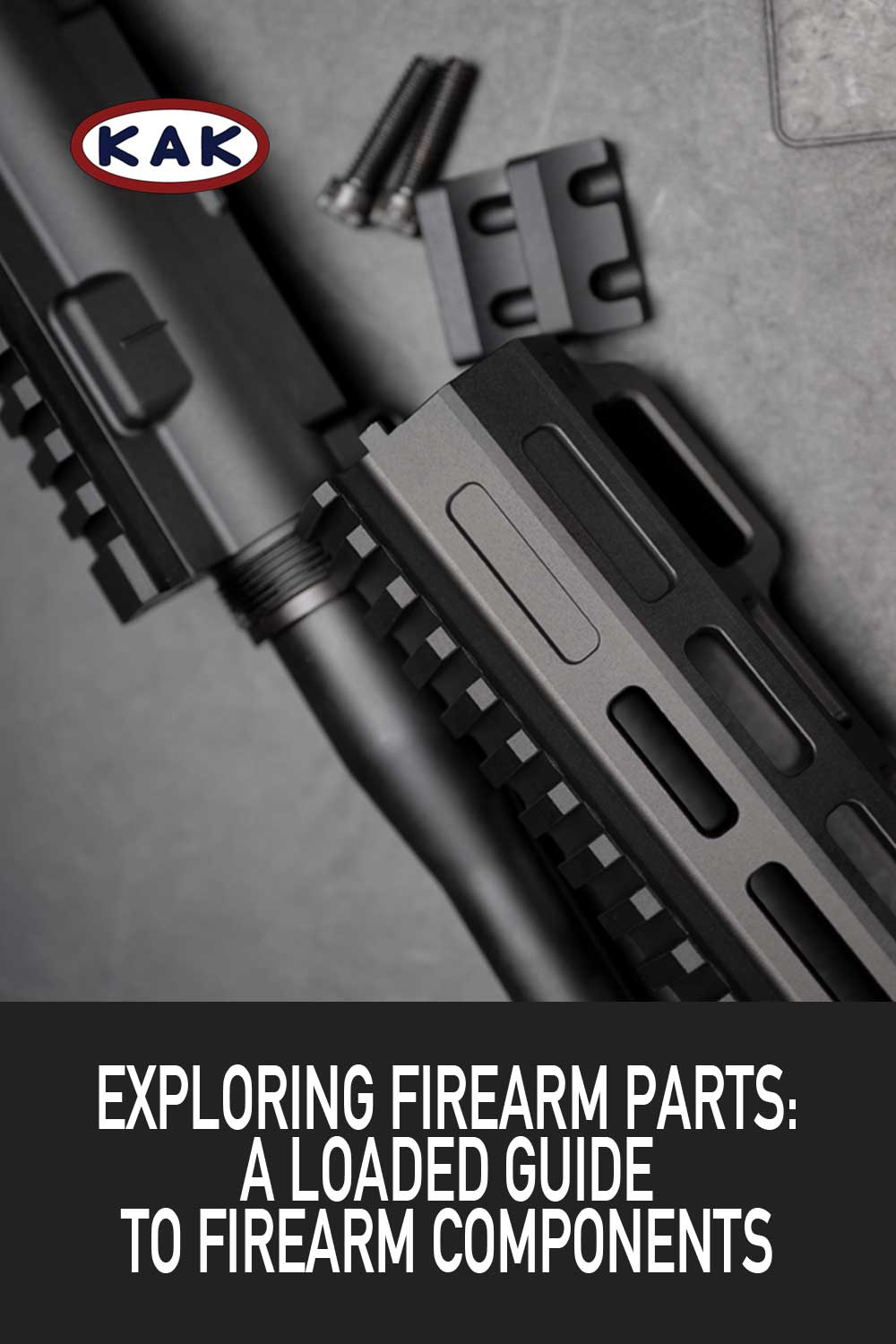
🎯 We hope you found our article informative and engaging. Your thoughts and insights are valuable to us! Whether you’re a seasoned firearm enthusiast or just delving into this world, we’d love to hear your feedback. Please take a moment to leave a comment below and share your thoughts. Your comments help us better tailor our content to your interests and provide you with even more valuable information in the future. Thank you for being a part of our community! 🔍🔧🔫
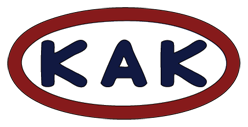

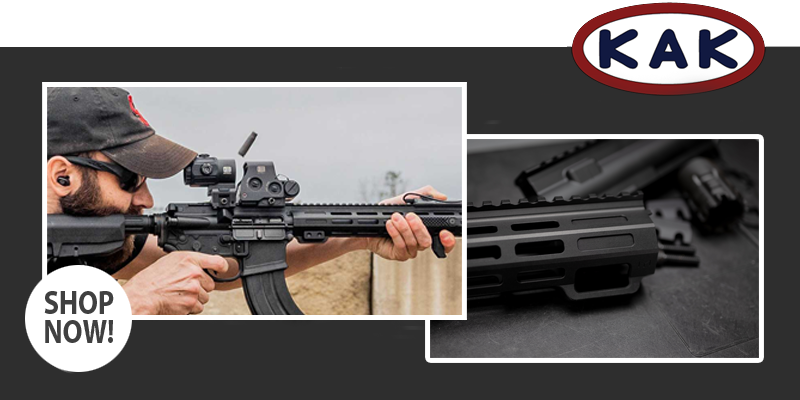
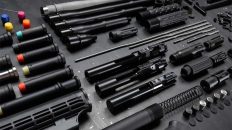
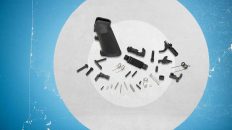
The lightening cuts on the barrel nut are causing my rail to dip downward slightly after the wedges are tightened. Its not causing a problem functionally, but it aesthetically unappealing.
The easy fix would be to make the lightening cuts not go all the way to the front of the barrel nuts or to forgo adding the cuts. Alternatively, you could include a set of shims to allow customers to time the barrel not so that they can ensure that the lightening cuts don’t line up at the 11 and 1 o-clock positions.
Thanks for your feedback! We appreciate your suggestion about adjusting the lightening cuts and including shims to help align the barrel nut. I’ll pass this on to our design team for consideration. Thanks again!